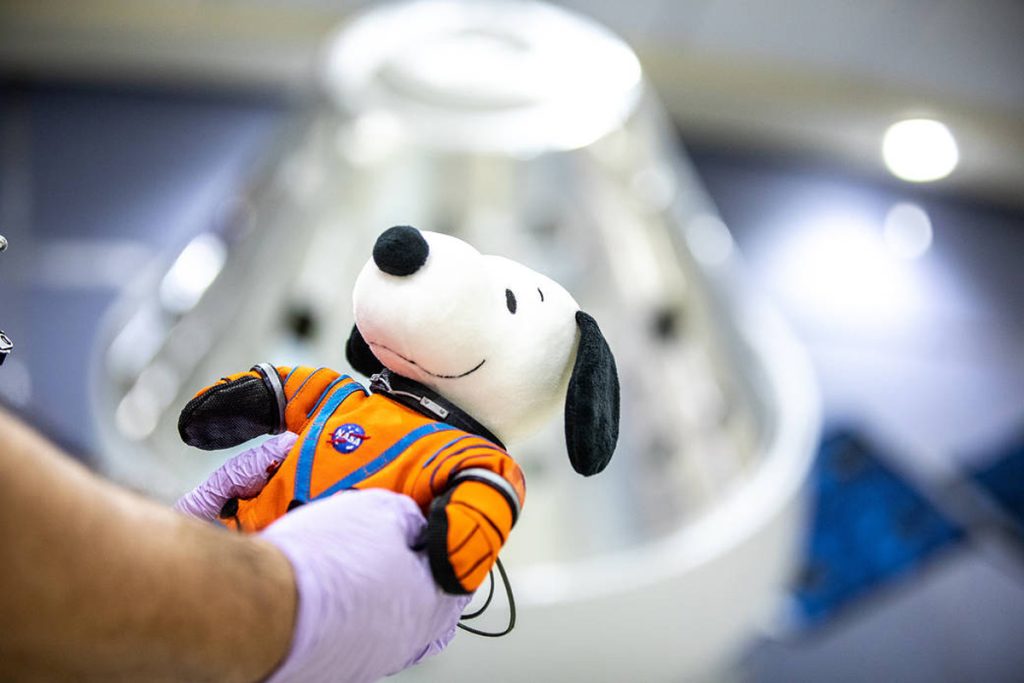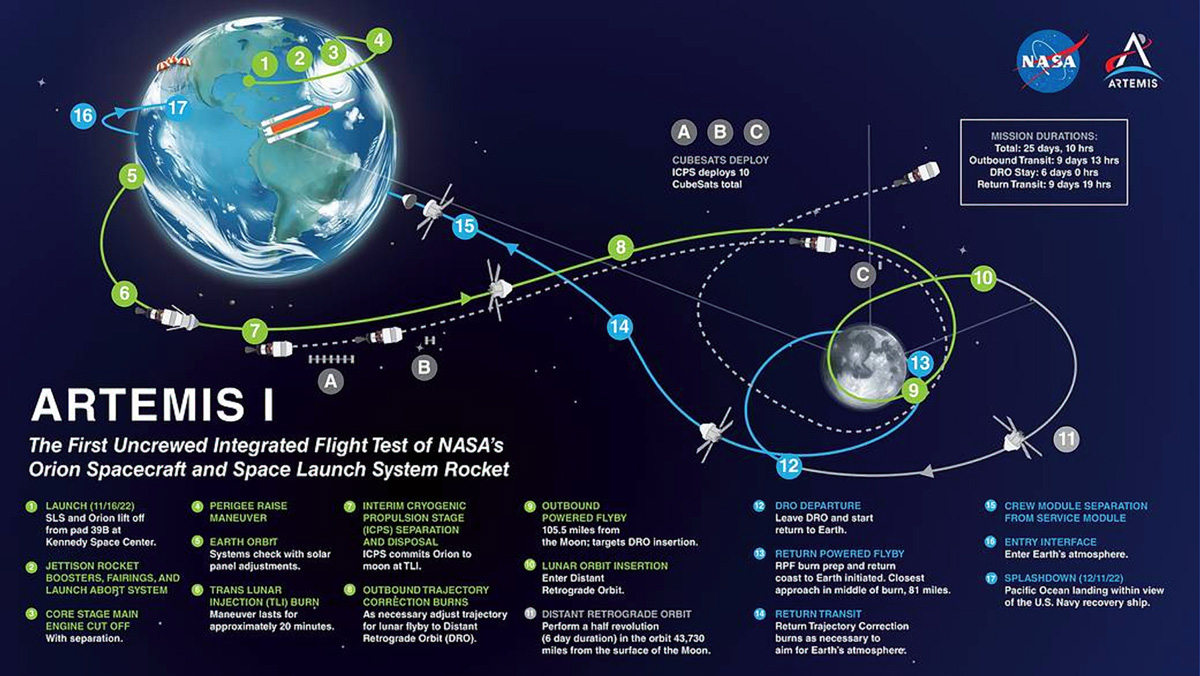
In the January issue, we talked with Jared Martinez about his experiences growing up in Questa, his education and career. This month, we’ll be talking about the work he’s been doing with NASA and the project he’s been working on for over a decade now — the Artemis Program.
Originally begun by the Bush administration in 2005 with the name “Constellation,” the intention was to once again land humans on the moon. This has not been done since the Apollo Program’s last mission, Apollo 17, blasted off the lunar surface in December 1972. Since then, the project has undergone numerous changes, morphing from Constellation into Artemis. (In Greek mythology, Artemis was the twin sister of Apollo. Considered the Goddess of the Hunt, she was also associated with the moon.) The Artemis mission picked up new objectives along the way. Now, the mission is not only to return to the moon, but to establish a permanent presence there and use the moon as a launching pad for the ultimate goal of the Artemis Program: Mars.

“The NASA director came out… and said that basically by the end of the decade we’re going to be traveling to Mars or living on the moon,” says Jared. “Or both.”
An ambitious project to be sure, and some might question its usefulness. Jared says though, that space, especially the moon, is at the center of a new geopolitical contest. “There’s a new space race going on, particularly with China.”
And unlike the Space Race with the Soviet Union during the Cold War years, this one isn’t just for prestige and knowledge, but for real world economic gains and military security.
First, the moon is loaded with mineable resources, including silicon, titanium and rare earth elements. Currently, China controls the bulk of the rare earth market, so moon mining could free the world of dependence on their authoritarian regime and deprive it of much needed funds. The moon is also rich in a type of helium called helium-3. With earth’s supply of helium running out, the moon could prove vital in providing helium for industrial and medical use in the future. Scientists also believe that helium-3 could be used in making the next generation of rocket fuel for use by lunar-based craft.
And it’s not just the moon that might be mined, but asteroids as well. Nearby asteroids contain vast amounts of iron, copper, gold and numerous other mineral resources, quantities vast enough to completely transform the global economy. Wealth could potentially be created on a vast scale, so it’s little wonder that NASA is partnering with private industry on the Artemis Program, with companies planning their own missions to follow in Artemis’ wake.
There’s also the security aspect. China is planning its own moon missions and many pundits and foreign policy wonks expect the Chinese Communist Party to conduct espionage, if not outright militarize the moon, if possible, a place some military experts have referred to as “the ultimate high ground.” In fact, NASA director Bill Nelson told Politico in a January interview that he believes “It is not beyond the realm of possibility that they [China] say, ‘Keep out, we’re here, this is our territory,” pointing to their continued aggression in the South China Sea as exemplary of their behavior around disputed regions. By establishing a permanent presence before the Chinese can, the U.S. and our European allies, who are contributing to the development and expense of Artemis, hope to thwart any potentially hostile actions by the CCP.
And if that wasn’t enough, Hilton has also recently engaged in partnership talks with NASA on potential space tourism opportunities. Yes, it may be possible some day to take a vacation to the moon. A hefty price no doubt but an experience and view that is sure to be out of this world.
As for Mars, the goals aren’t as dire, or profitable. The eventual manned missions to Mars, which have yet to be firmly planned, are much more about exploration and discovery. Whenever they happen, the plan is to launch them from the moon, vastly decreasing the needed fuel (since the moon has effectively no atmosphere and less than 1/5 of the earth’s gravity, spacecraft can launch more easily).
There’s still a lot of work to be done though, since a round trip to Mars will take about three years! Astronauts will have to bring food and water to last the whole trip, since Mars has none. It’s still unclear if food could successfully be grown on the Martian surface given the soil chemistry, the lack of native water resources and the need to shield plants from solar rays, since Mars has little atmosphere and no magnetic field to protect it, or the astronauts, from lethal doses of radiation.
All of those challenges are still a long way off. For now, NASA is focusing on establishing the technology and infrastructure needed to get to the moon and stay there. The first test mission, Artemis 1, was launched November 16, 2022. NASA got to see how its new rocket, named SLS (Space Launch System), performed as well as testing the Orion crew module that Jared and his team at Lockheed-Martin developed. Together, along with the currently in work lunar lander, space habitat, lunar habitat, and more, will make up the Artemis mission(s) at its technological peak.
Equipped with advanced mannequins, called manikins, the module flew past the moon before returning to Earth 25 days and 1.4 million miles later, with data on the module’s performance and how a real crew would have held up. The mission was a resounding success and now NASA is looking forward to the Artemis 2 mission in 2024, with new missions launching every two years from there. Artemis 2 will be the first manned mission, with astronauts testing the system as the manikins did.
Artemis 3 in 2026 will see the first landing on the moon since Apollo and will include the first woman and the first person of color to walk on the lunar surface. From there, NASA’s plans become less firm, but missions are supposed to go at least through Artemis 8. By then, NASA plans to have permanent inhabited installations and commercial activity in some form on the moon.
But remember, when you’re glued to your TV one day in 2026, watching humanity take its next step towards a cosmic destiny, it was Jared Martinez of Questa and his dedicated team that made sure human beings had a safe way to get there.
See NASA’s website at https://www.nasa.gov/artemisprogram for more about the technology and people behind man’s new quest(a) for the moon.




